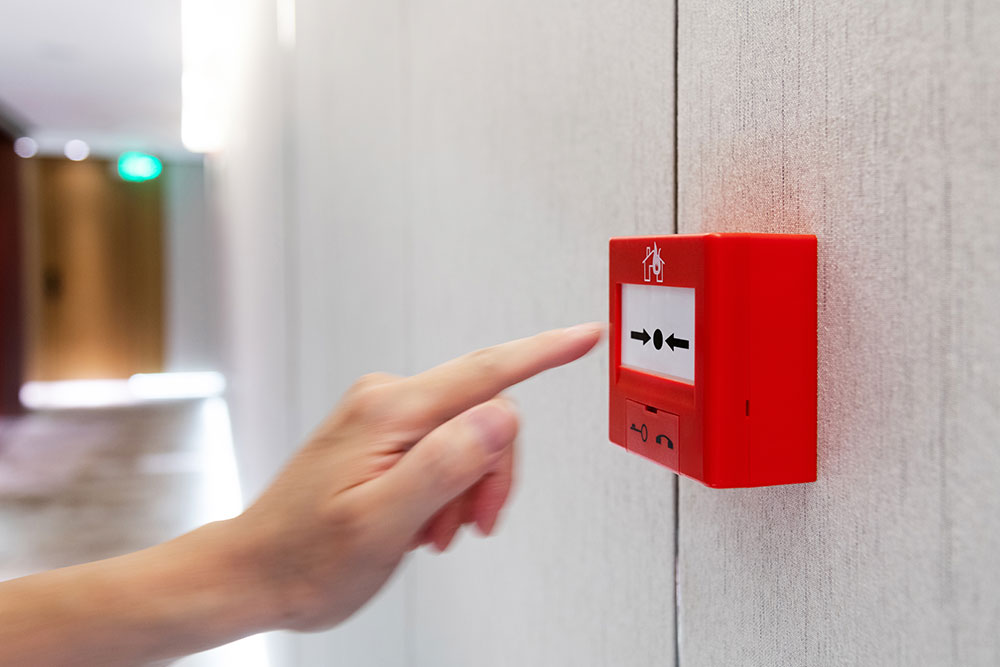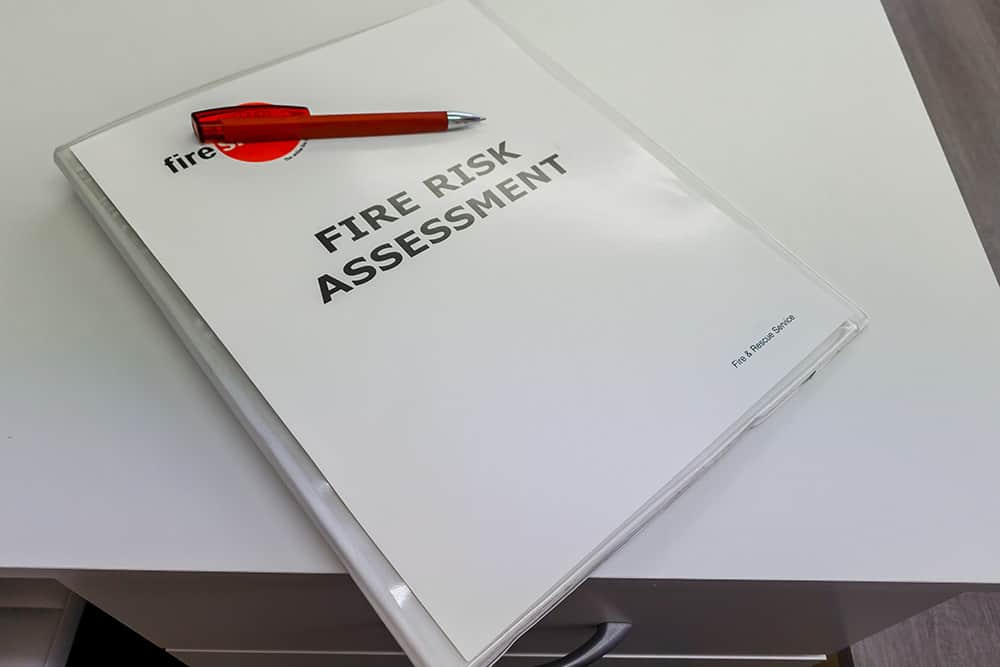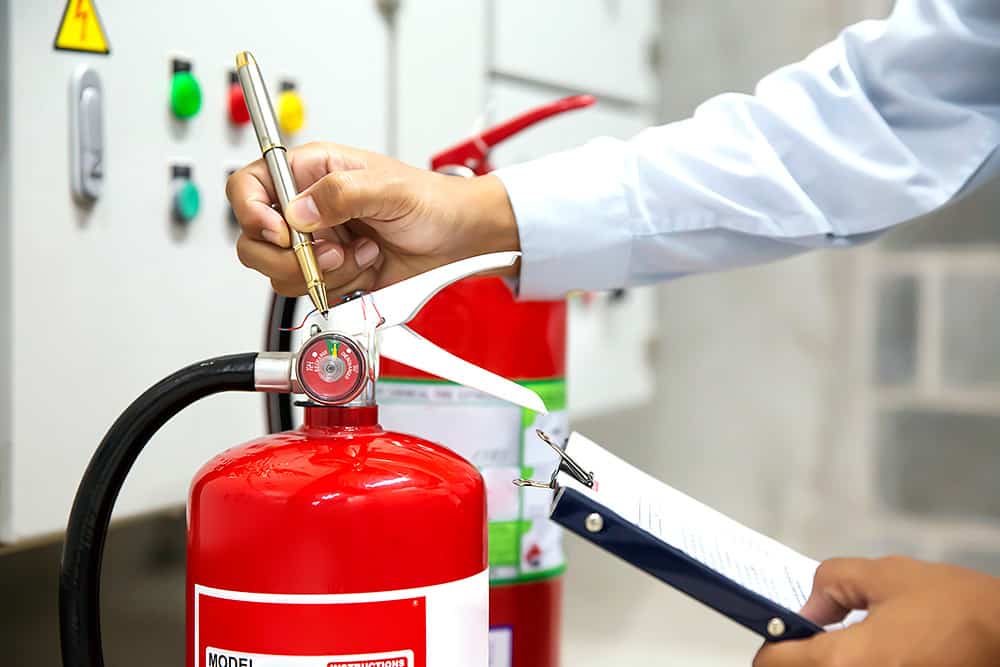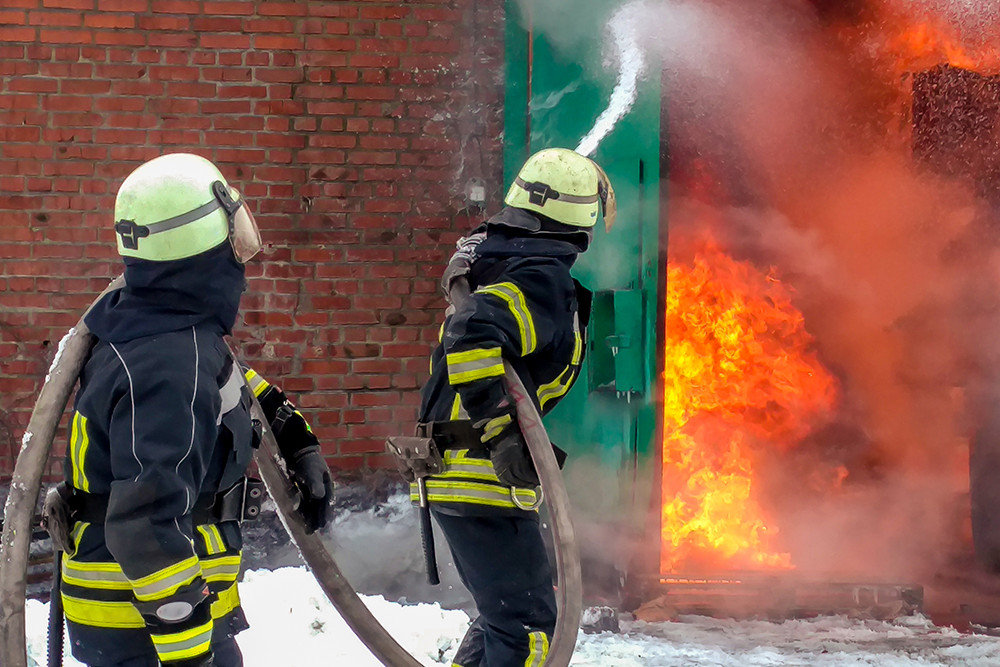
Fire alarms should be straightforward: hear the sound, evacuate the building. But what about an intermittent fire alarm? Is it a warning of a fire or a fault with the system?
Generally, you should treat an intermittent fire alarm as an alert to evacuate. But this isn’t a rule. Depending on your workplace and its fire detection system, it may mean something different. Our guide explains why intermittent fire alarms happen and what you should do to stay safe when you hear one.
Key Takeaways
- An intermittent fire alarm in a building or hospital indicated a possible fire in a nearby fire zone. An intermittent tone on a smoke detector is likely a battery issue.
- In the event of an intermittent alarm, follow the established evacuation plan or instructions from a responsible person.
- Faulty fire alarm systems put people at risk. Regular maintenance of all fire safety measures is required to ensure legal compliance.
What an Intermittent Fire Alarm Can Mean
The most common cause of an intermittent fire alarm depends on your system.
Fire Alarm in Buildings
If there’s an intermittent fire alarm in a building, such as an NHS facility or hospital, it means a potential fire in a nearby fire zone in the building.
You should remain calm and follow instructions from the building staff, a responsible person or a fire warden.
Smoke Alarm
An intermittent tone on a smoke alarm is typically an error. It will likely need a new battery or other maintenance. The same is the case for mains-powered smoke alarms with battery backup.
Note: Intermittent doesn’t mean the same as inconsistent. If the alarm pattern isn’t regular, it may signal a fault. You should still assume there is a fire unless told otherwise by a duty holder. The responsible person should check the alarm system and arrange repairs as necessary.

How to Handle an Intermittent Fire Alarm
An intermittent fire alarm can mean different things in different workplaces. You should ask your responsible person or fire warden to clarify.
However, whatever the specific meaning, an intermittent tone is still a warning. It’s typically alerting you to a fire in an adjacent building area, although this can vary.
So, if you hear an intermittent fire alarm, be on guard. You may need to report the fire alarm to a fire warden or colleagues nearby, then evacuate or remain in place.
However, it’s always better to err on the side of caution. Unless you’re sure, treat an intermittent fire alarm as a general warning to evacuate the building:
- Leave your personal belongings
- Close fire doors as you leave to prevent the spread of flames and smoke
- Follow instructions and take cues from your fire wardens
- Gather at the agreed assembly points
These are general steps to an emergency evacuation. The actual process may differ for your workplace. Refer to the General Emergency Evacuation Plan (GEEP) for instructions if you’re unsure. GEEPs should be clearly posted in buildings like hospitals where visitors are often on-site.
If you’re a hospital employee, you may also have to refer to a Personal Emergency Evacuation Plan (PEEP). PEEPs are written for individuals who cannot evacuate unassisted, so they’re common in hospitals and care homes.

Safe Evacuations
Always evacuate as calmly and safely as possible. Follow the agreed plan and listen to your fire wardens.
Fire wardens should also be trained to use fire extinguishers. They can put out small fires blocking your safe exit.
If you’re evacuating without supervision from a fire warden, avoid handling an extinguisher. Tackling even a small fire is dangerous, and using the wrong extinguisher or technique can make the situation worse. Only risk using an extinguisher yourself in critical situations where no one trained is available.
Why Some Fire Alarms Ring Intermittently
Fire alarms are essential safety devices for almost all workplaces. The Regulatory Reform (Fire Safety) Order 2005 specifies that all non-domestic premises need an appropriate system to detect fires and alert building occupants. In all but the smallest workplaces, this means a fire alarm system.
There are multiple types of fire alarms. If you’ve heard an intermittent fire alarm, you’re almost certainly dealing with a complex system that monitors different areas, known as an addressable fire alarm.
Addressable fire alarm systems are suited for large buildings where different areas carry different levels of fire risk. A good example of this type of workplace would be a hospital, which is why intermittent fire alarms are often heard in NHS buildings.
The responsible person, a role designated under the Fire Safety Order, will decide what type of fire alarm is suitable for your workplace based on a fire risk assessment. They also have to implement, monitor and maintain all fire safety measures, as well as provide instruction and training to staff.
Part of the required training should cover evacuation procedures. You should be made aware of what an intermittent fire alarm means in your workplace. If not, you should seek out the responsible person or their fire wardens (people appointed to assist with fire safety duties) for clarification.
Equip Employees with Adequate Training
Fire can break out in any kind of workplace at any time, and how people respond to it can affect how much loss it causes. Everyone in the workplace should have a basic awareness of fire safety, and appointed responsible persons such as fire wardens must be competent to perform their legal duties.
Human Focus provides online Fire Safety Courses for general employees, responsible persons, and those with special fire safety duties such as fire door inspections. Approved recognised bodies such as RoSPA, NAFDI, CPD, and IIRSM, our courses help ensure everyone understands their legal responsibilities and confirm they have been provided with adequate training to meet them.






















